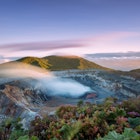
Jan 20, 2026 • 11 min read
Come to Costa Rica for its multitude of outdoor activities, from surfing and hiking to watching wildlife in a rainforest or zip-lining in a cloud forest.

Jan 20, 2026 • 11 min read
Come to Costa Rica for its multitude of outdoor activities, from surfing and hiking to watching wildlife in a rainforest or zip-lining in a cloud forest.

Jan 20, 2026 • 13 min read
From visiting the Ghibli Museum and temple tours to feasting on fine Japanese cuisine, here's our pick of the top things to do in Tokyo.

Jan 20, 2026 • 7 min read
Planning to visit Mexico? Lucky you. From tipping to safety to etiquette and beyond, here are some pointers to keep in mind as you plan your trip.

Jan 20, 2026 • 8 min read
Chile is a broadly accessible destination, but travelers who are aware of a few customs and safety issues will make the most of their visit.

Jan 20, 2026 • 8 min read
Don't miss the best of Costa Rica. Here's our pick of the unmissable places to visit.

Jan 20, 2026 • 3 min read
Max Knight, a Los Angeles-based British photographer, takes you on a ride across the Swiss Alps via the UNESCO-listed Rhaetian Railway.

Jan 20, 2026 • 6 min read
If you need a place to recover from the holiday hustle and set the perfect tone to begin the New Year, these destinations each make an ideal February escape.

Jan 20, 2026 • 4 min read
Beloved for its one-of-a-kind urban energy, Naples also has some fine beaches dotted along its long waterfront – especially the beaches of Posillipo.

Jan 19, 2026 • 8 min read
Canada’s best beaches range from surfing areas off Vancouver Island to sandbars on the Atlantic Ocean to dreamy lakeside beaches in between.

Jan 19, 2026 • 11 min read
The last Buddhist kingdom in the Himalayas, Bhutan serves up remarkable and life-changing experiences.

Jan 19, 2026 • 7 min read
If the 2024 Summer Olympics in Paris piqued your interest, it’s not too early to turn your focus to the 2028 games in LA.

Jan 19, 2026 • 11 min read
From family beaches to quiet coves and great stretches of empty golden sand, the best beaches in Ireland offer something for every kind of traveler.

Jan 19, 2026 • 6 min read
Whether you’re looking to relax or chase adrenaline, there’s lots to do in Palm Springs and throughout the Coachella Valley year-round.

Jan 19, 2026 • 6 min read
Hawaiian culture is about much more than melodic place names and luau – slow down and learn at these amazing cultural experiences in Maui.

Jan 19, 2026 • 5 min read
Timing a trip to Costa Rica depends on the small but mighty country's weather patterns and your desired activities. Use this guide to kickstart your planning.

Jan 19, 2026 • 6 min read
England’s lengthy, diverse history is chronicled by a wealth of important and distinct museums, many situated well beyond London.

Jan 19, 2026 • 14 min read
Florida has no shortage of coastline. These 12 beach towns are our absolute favorites.

Jan 18, 2026 • 7 min read
On these beloved St Augustine beaches escape the crowds, find the best surf, swim the warm waters, go shelling or catch a few hours with a book under the sun.

Jan 18, 2026 • 11 min read
Plan your spring vacation in Europe with our pick of the best places to see as the weather gets warmer.

Jan 18, 2026 • 7 min read
From wildflowers to beaches to city energy and national parks, these US destinations offer tremendous variety for spring travel.

Jan 17, 2026 • 4 min read
Maui is making it easier for tourists to give back to the local community. Here's how to volunteer.

Jan 17, 2026 • 5 min read
Discover the best time to visit Florida Keys, with tips on seasons, weather, prices, crowds, events and ideal months for water activities.